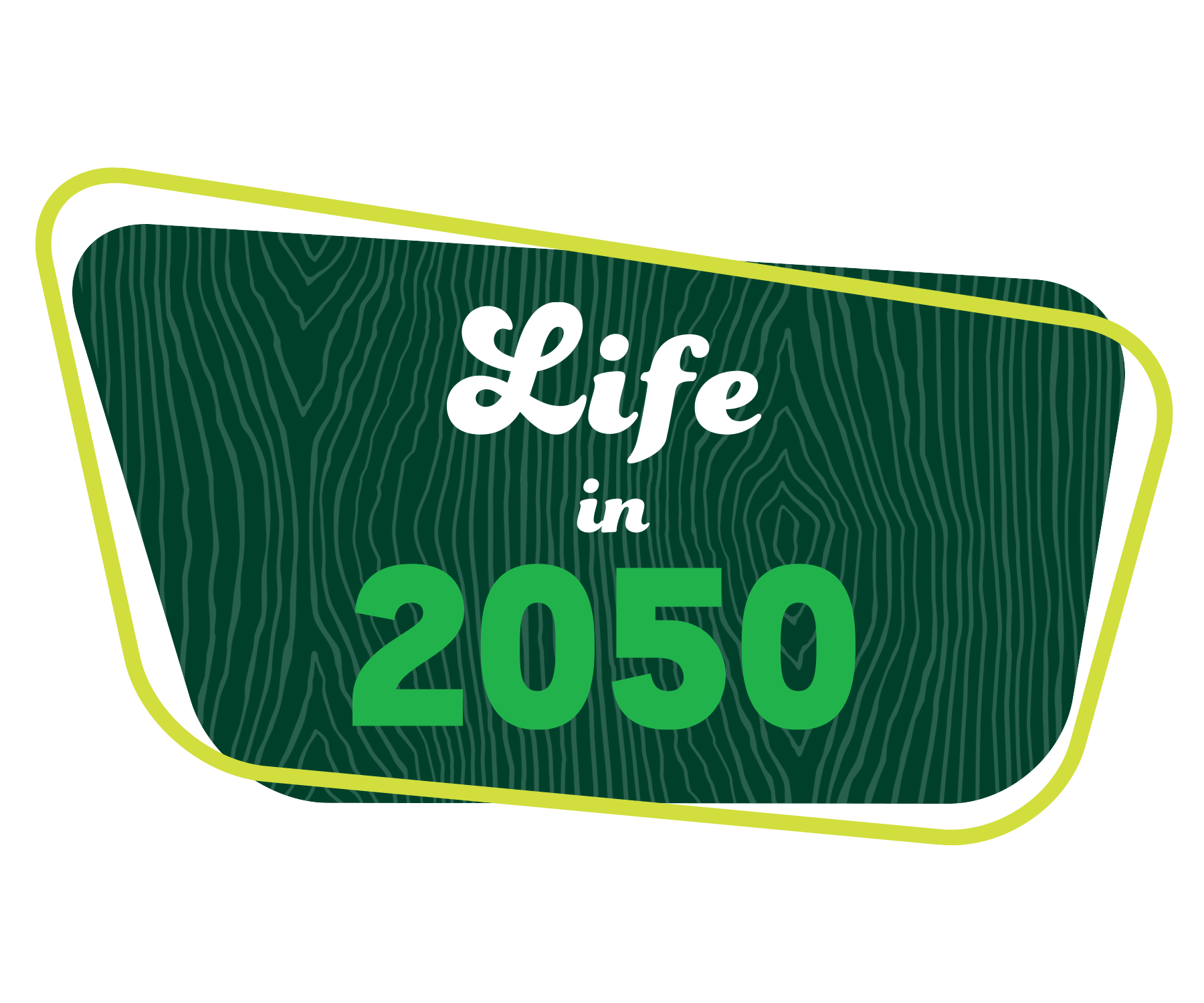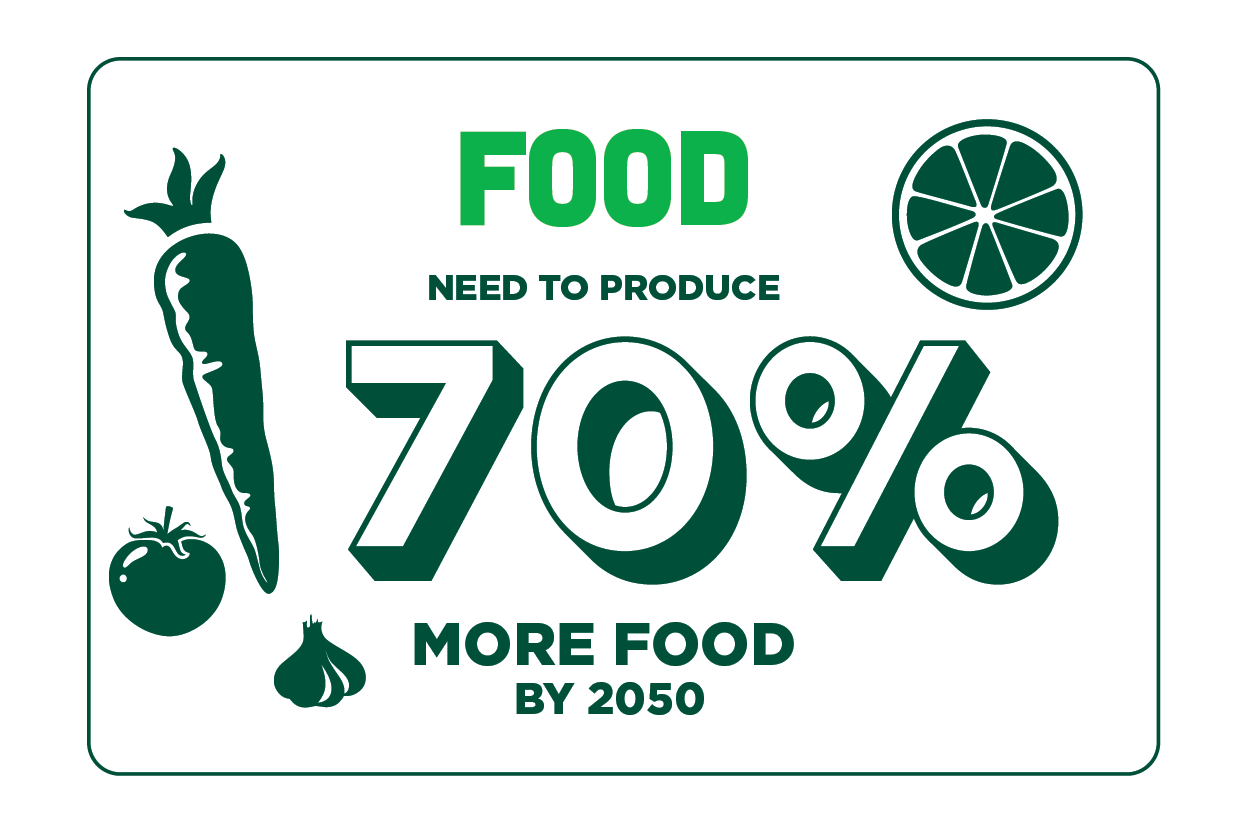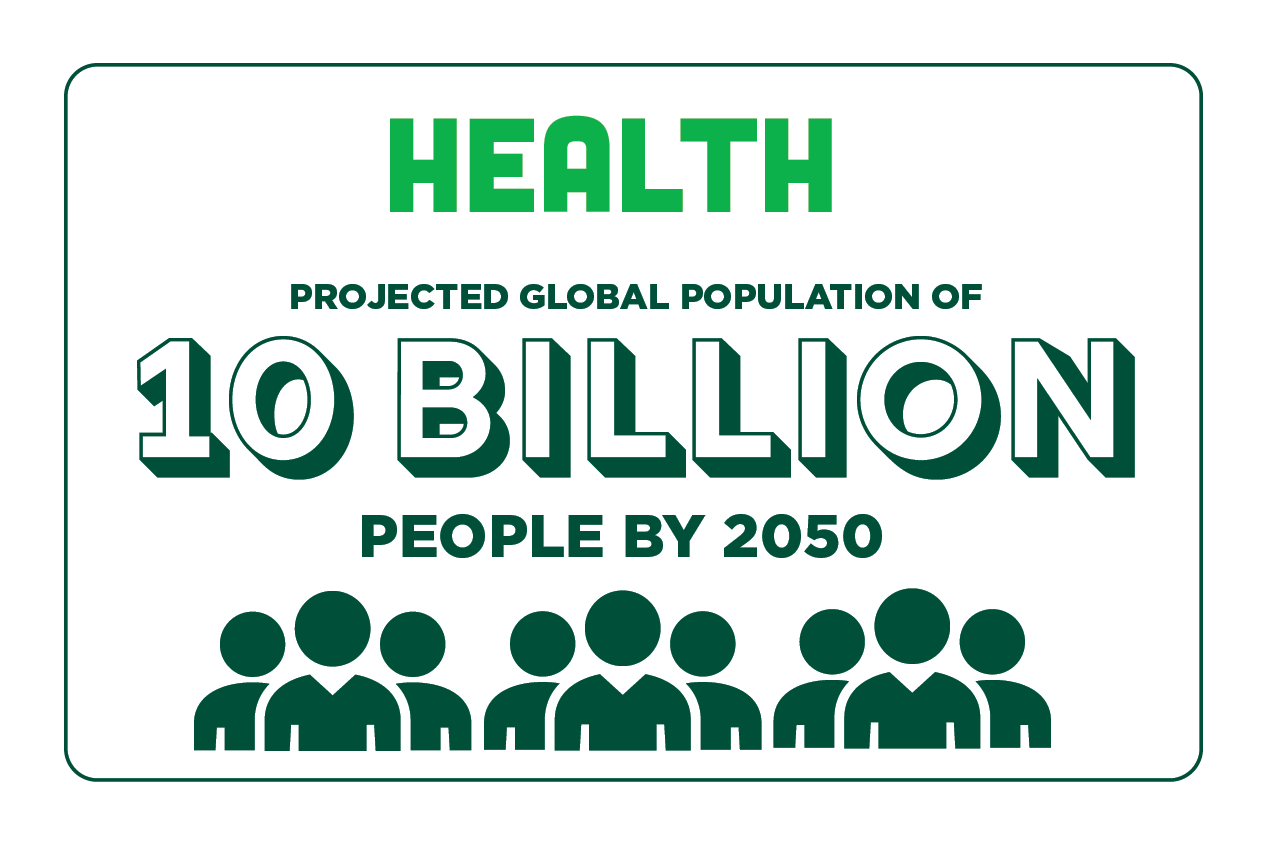Life in 2050 Trends
 Life in 2050 will bring with it new and continuing trends that will affect the food, health and the environment worldwide.
Life in 2050 will bring with it new and continuing trends that will affect the food, health and the environment worldwide.
Spartans in the College of Agriculture and Natural Resources cultivate the next BIG IDEAS in food, health and the environment with academic programs, research and outreach work in different areas of study.
We need people like you to help us meet the demands of the next century!
Food Security & Food Justice

Vulnerable populations and communities around the globe will experience these challenges first and most intensely.
In 2020, 155 million people in 55 countries and territories were living in areas considered to be in food crisis. Food crisis means households have food gaps that result in malnutrition, economic livelihoods are being lost at rates higher than they are replaced and people may be forced to crisis coping strategies (UN World Food Program - Global Report on Food Crises 2021).
Data also from How to Feed the World in 2050/UN Economic & Social Development Department.
This complex issue is directly related to global health, human rights and national security.
Increased Demand from a Growing Population

This changing climate will have an incredible effect on our ability to produce food – and our overall food security. As our population rises to nearly 10,000,000,000 and nearly 70% of us live in urban areas (compared to nearly 50% now), we’ll need to produce nearly 70 % more food, annually (Food and Agriculture Organization of United Nations Issues Briefs).
To reach this level of production, we’ll need to balance increasing crop yields against expanding farmable land. At current rates, agriculture, forestry, and other related land uses account for nearly 25% of greenhouse gases produced by people (UN Climate Change – Land Use).
Data also from How to Feed the World in 2050/UN Economic & Social Development Department.
How we cultivate our food will need to be balanced against the carbon cost of producing it.
Our Changing Climate

During the summer of 2021, the Intergovernmental Panel on Climate Change (IPCC) released its sixth assessment report on climate change for policy makers. Based on the extensive research reviewed, this IPCC panel determined:
“Human induced climate change is already affecting many weather and climate extremes in every region across the globe. Evidence of observed changes in extremes such as heatwaves, heavy precipitation, droughts and tropical cyclones are attributed to human influence.”
Human activity has contributed to and directly caused our global temperature to increase. In fact, 19 of the hottest years on record occurred since the year 2000 (NASA – Global Climate Change).
Extreme weather events – droughts, wildfires, floods, powerful storms, and volatile weather patterns – are becoming increasingly regular and will affect nearly every part of our daily lives.
Redesigning Home
Our housing will need to adapt, too. Based on current models, flood risks homes to low-income homes in some regions in the United States are set to triple by 2050 – the largest concentration of these homes will be in New Jersey, New York, and Massachusetts (Scientific American article: Dec. 2020).



 Print
Print Email
Email